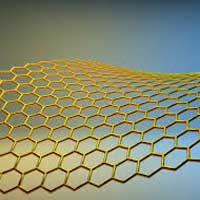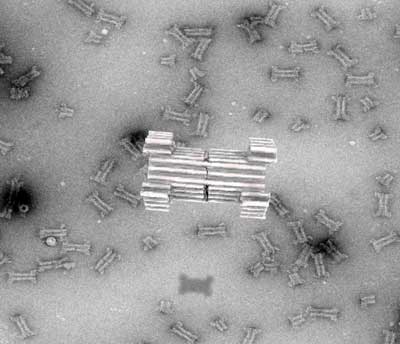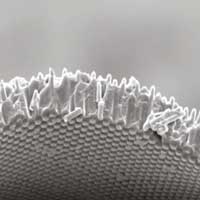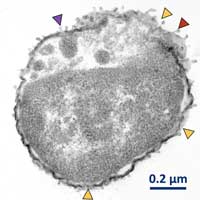 Scientists developed a new methodology that allows researchers to assess the chemical composition and structure of metallic particles with a diameter of only 0.5 to 2 nm.
Scientists developed a new methodology that allows researchers to assess the chemical composition and structure of metallic particles with a diameter of only 0.5 to 2 nm.
Friday, December 13, 2019
Nanoscience breakthrough: Probing particles smaller than a billionth of a meter
 Scientists developed a new methodology that allows researchers to assess the chemical composition and structure of metallic particles with a diameter of only 0.5 to 2 nm.
Scientists developed a new methodology that allows researchers to assess the chemical composition and structure of metallic particles with a diameter of only 0.5 to 2 nm.
A self-cleaning surface that repels even the deadliest superbugs
 Researchers create the ultimate non-stick coating, with medical settings and food industry in mind.
Researchers create the ultimate non-stick coating, with medical settings and food industry in mind.
Better studying superconductivity in single-layer graphene
 An existing technique is better suited to describing superconductivity in pure, single-layer graphene than current methods.
An existing technique is better suited to describing superconductivity in pure, single-layer graphene than current methods.
Researchers create synthetic nanopores made from DNA
 Researchers have constructed a synthetic DNA nanopore capable of selectively translocating protein-size macromolecules across lipid bilayers.
Researchers have constructed a synthetic DNA nanopore capable of selectively translocating protein-size macromolecules across lipid bilayers.
Freestanding microwire-array enables flexible solar window
 Transparent solar cells (TSC) are emerging device that combines the benefits of visible transparency and electricity generation. Scientist have developed a new-concepted TSC consisting of freestanding Si microwire-arrays and transparent polymer matrix with tunable transparency and stretchability.
Transparent solar cells (TSC) are emerging device that combines the benefits of visible transparency and electricity generation. Scientist have developed a new-concepted TSC consisting of freestanding Si microwire-arrays and transparent polymer matrix with tunable transparency and stretchability.
A nano-sized slice of pie (w/video)
 Scientists explain why some molecules spontaneously arrange themselves into five slices of nanoscale pie.
Scientists explain why some molecules spontaneously arrange themselves into five slices of nanoscale pie.
Deadly 'superbugs' destroyed by molecular drills
 Motorized molecules activated by light target and drill through highly antibiotic resistant bacteria and kill them within minutes. The molecules can open bacteria to attack by drugs they previously resisted. The strategy could be applied to bacterial infections or diseases on the skin, in the lungs or in the gastrointestinal tract.
Motorized molecules activated by light target and drill through highly antibiotic resistant bacteria and kill them within minutes. The molecules can open bacteria to attack by drugs they previously resisted. The strategy could be applied to bacterial infections or diseases on the skin, in the lungs or in the gastrointestinal tract.
Researchers perfect nanoscience tool for studies of nuclear waste storage
 The study involved the first-ever use of antimatter to investigate processes connected to potential long-term storage of waste from nuclear reactors.
The study involved the first-ever use of antimatter to investigate processes connected to potential long-term storage of waste from nuclear reactors.
A new way to induce the quantum anomalous Hall effect
 A ferromagnetic layer can induce the quantum anomalous Hall effect in a topological insulator.
A ferromagnetic layer can induce the quantum anomalous Hall effect in a topological insulator.
Subscribe to:
Posts (Atom)
